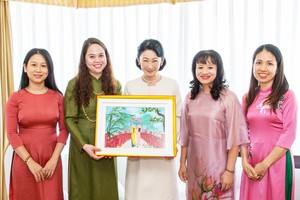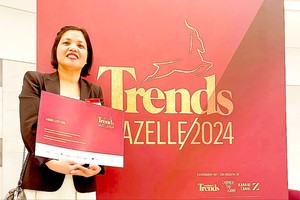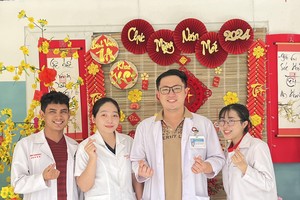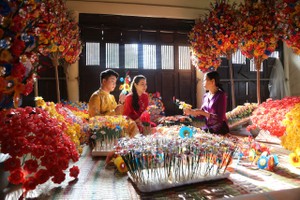Vietnamese biomedical scientist Vo Dinh Tuan has just been ranked forty-third in a list of the world’s “Top 100 Living Geniuses” as identified and ranked by Synectics, a UK-based global consulting firm.

Vo Dinh Tuan
Sharing forty-third place with Tuan in the list released 29 October 2007 are U.S. boxer Mohammed Ali and Microsoft’s Bill Gates.
Tuan was born in Viet Nam and, like many famous inventors, built his own toys as a boy. At 17, he moved to Switzerland, where he earned a B.S. in Physics in 1971 and a Ph.D. in Biophysical Chemistry in 1975.
In 1975, Tuan emigrated to the U.S. and became the inventor of a variety of life-saving medical devices to non-intrusively detect and diagnose diseases, defects and toxins using optical scanning instead of biopsies (the surgical removal of living tissue for analyses).
Tuan’s first patent, granted in 1987, was for a small, easy-to-make badge that when pinned to one’s shirt records the amount and type of the user’s exposure to toxins when the badge is run through an optical scanner to estimate the extent of toxic threat the user has been exposed to.
In the medical field, Tuan invented similar detection systems for damaged DNA, diabetes, and cancer, which also employ a synchronous luminescence (SL) technology Tuan made feasible through his earlier work.
To date, Tuan has been awarded 30 patents which have been licensed by numerous medical and environmental companies. His innovations are used by such research organizations as the U.S. National Cancer Institute and hospitals throughout the United States.
Tuan continues to innovate, with his more recent works including an optical disc storage system ("SERODS") used in supercomputer memory, medical databases, and NASA satellites (1992). He also created an enormously successful method for optical cancer detection (1994).
Tuan is a Corporate Fellow and Group Leader at the Oak Ridge National Laboratory (ORNL) in Oak Ridge, Tennessee, where he was named Inventor of the Year in 1992.
Tuan’s research activities and interests cover an astounding gambit of biophysics, including biophotonics, laser-excited luminescence spectroscopy, room-temperature phosphorimetry, synchronous luminescence spectroscopy, surface-enhanced Raman spectroscopy, field environmental instrumentation, fiberoptics sensors, nanosensors, biosensors and biochips for the protection of the environment and the improvement of human health.
While at ORNL, Tuan has won seven “R&D 100 Awards” for his inventions, ranging from a passive dosimeter capable of detecting a person’s exposure to toxic organic chemicals to what is called the “Multi-functional Biochip”, which allows simultaneous detection of several diseases.
Tuan also won the Gold Medal Spectroscopy Award from the Society for Applied Spectroscopy in 1988 and, in 1997, was awarded the U.S. Department of Energy BER-50 Award for distinguished service to a healthy citizenry. In 1992, he was awarded the International Hall of Fame Award in Advanced Technology from the Inventor Clubs of America.

In an interview on the ORNL’s website, when asked “When and why did you decide to become a scientist?”, Tuan replied, “My parents instilled in me the value of education and an interest in science. Even when I attended high school in Viet Nam, my father used to tell me that, ‘unlike material wealth which can be lost any time, an education will remain with you for the rest of your life.’ In graduate school, I really started to seriously consider a career in research.”
That was in the early 1970s, just after the May 1968 student revolution, which began in France and later spread throughout Europe.
It is a time Tuan remembers fondly and one he partly credits for a personal perspective which has led to his many successes.
“We, as students,” Tuan reminisces, “were interested in so many topics. We often questioned the meaning and purpose of existence. In classes, we read physics and chemistry books. But, out of class, we were immersed in books by Albert Camus, Jean-Paul Sartre, Carl Jung, and Jiddu Krishnamurti. During that period almost every student thought or dreamed, often in a naive and innocent way, that he or she was going to ‘reinvent the world.’ In some respects, this ‘existentialist period’ of my student life has continued to influence my thoughts about scientific research. I still believe that science, from time to time, needs to question its purpose and ‘reinvent itself’ in order to refresh itself from outdated beliefs and old paradigms.”
























